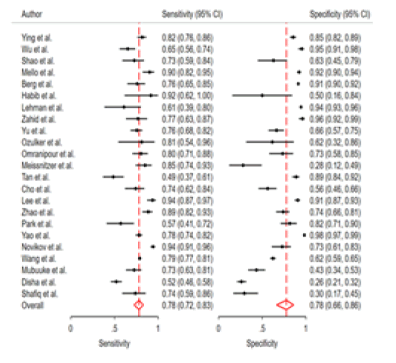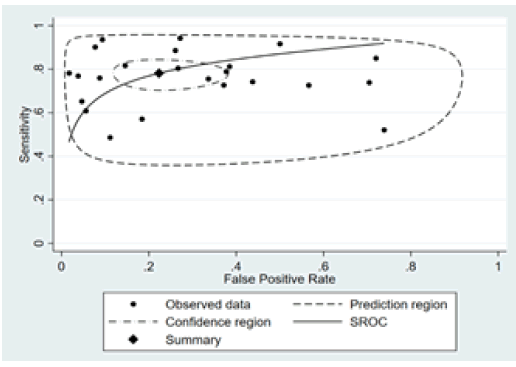Case Report - Onkologia i Radioterapia ( 2023) Volume 17, Issue 9
Cutaneous relapse after primary breast lymphoma remission
Jiyoung Yun*Jiyoung Yun, Department of Plastic and Reconstructive Surgery, Inje University, Republic of Korea, Email: psyjy2013@gmail.com
Received: 26-Jul-2023, Manuscript No. OAR-23-113186; Accepted: 10-Sep-2023, Pre QC No. OAR-23-113186 (PQ); Editor assigned: 27-Jul-2023, Pre QC No. OAR-23-113186 (PQ); Reviewed: 30-Aug-2023, QC No. OAR-23-113186 (Q); Revised: 07-Sep-2023, Manuscript No. OAR-23-113186 (R); Published: 14-Sep-2023
Abstract
Primary breast lymphoma is a rare extra-nodal lymphoma that accounts for only 0.4%-0.5% of all breast malignancies. Cases with only skin recurrence without primary site involvement after remission are rarer. In this case, a 49-year-old woman was diagnosed with diffuse large B-cell lymphoma of the left breast, which was in complete remission after chemotherapy. One year later, she requested excisional biopsy of a subcutaneous cyctic lesion in the posterior neck area on ultrasound. As a result of the surgical biopsy, the pathologic findings were diffuse large B-cell lymphoma. Treatment was completed after seventeen fractions of radion therapy without further wide excision. This is an important case because relapse of primary breast lymphoma without primary site involvement is rare and the isolated relapse at another site may have been misdiagnosed as a transient inflammatory cyst in the skin layer.
Keywords
cutaneous relapse, diffuse large b-cell lymphoma, primary breast lymphoma
Introduction
Diffuse large B cell lymphoma relapse on head and neck
Diffuse Large B-Cell Lymphoma (DLBCL) is the most common type of non-Hodgkin's lymphoma, representing nearly one-third of all cases. This lymphoma makes up the majority of cases in previous clinical trials of "aggressive" or "intermediate-grade" lymphoma [1-3]. DLBCL can be present at extra nodal sites. Over 50% of patients have some sites of extra nodal involvement at diagnosis, with gastrointestinal tract and bone marrow being the most common sites (each site found in 15%-20% of patients) [4]. Any organ can be essentially involved, making a diagnostic biopsy imperative. Breast could be one of these involved organs. In this case, it is called Primary Breast Lymphoma (PBL). The term “Primary Breast Lymphoma” (PBL) is used to define a malignant lymphoma primarily occurring in the breast in the absence of previously detected lymphoma localizations [5]. PBL is a rare disease, accounting for only 0.4%-0.5% of all breast malignancies, 0.38%-0.7% of all Non- Hodgkin Lymphomas (NHL) and 1.7%-2.2% of extra nodal NHL [6]. This is a unique case where relapse occurred only in the occipital scalp without other distant metastases. Although PBL is rare, skin relapse after remission is rarer. Such a lesion can be overlooked as a simple cyst or inflammatory reaction. Thus, we report it with a literature review (Figure 1).
Case Presentation
The patient was a 49-year-old woman diagnosed with DLBCL on left breast that Remitted after Six Cycles of Chemotherapy (RCHOP). One year later, she was referred to our outpatient clinic for an excisional biopsy of subcutaneous nodules on her left occipital area. The mass had been presented for six months with an increase in size. It caused tenderness at first. However, as it became firm, the pain was disappeared. The ultrasound reading was conglomerate, several cystic lesions (without vascular signal) in the superficial layer of the midline occipital area (2.5 cm in length) possible for benign cystic lesion. However, considering her history of PBL, surgical biopsy was performed under general anaesthesia (Figure 2).

Figure 2: (A) Homogenous large cells with vesicular nuclei, frequent mitotic figures (arrow), (B) Diffuse positive for CD20 and (C) High proliferation index in Ki-67
Histopathological evaluation revealed DLBCL non-GCB type. A PET-CT scan for recurrence and staging showed no organ or lymph node metastases or recurrence except for the scalp mass, a newly developed hyper metabolic subcutaneous lesion in the left occipital region. No other abnormal findings were observed on additional CT scans of the brain, abdominal, neck, or chest. Treatment was terminated after receiving five times of radiation therapy (Figure 3).

Figure 3: Positron emission tomography showing a newly developed hyper metabolic lesion on the left occipital area
Discussion
This was a case of DBLCL relapse confirmed in a patient who had been in remission after chemotherapy with a diagnosis of PBL and who came to us within a year with an inflammatory mass in another area, the scalp. Since there were no lesions in the primary site or other organs, it was judged as a relapse rather than metastasis and usually radiation therapy without additional surgery after confirmation by biopsy was the principle, but it was a case that ended with 17 radiation treatments after surgical excision under the judgment of benign cyst on ultrasound.
PBL is a rare but distinct extra nodal lymphoma subtype, accounting for less than 3% of extra nodal lymphomas, 0.5% of breast malignancies and more than 98% of cases occur in women. The most common histology is DLBCL. DLBCL is the most common type of NHL. It is potentially curable [7, 8]. However, patient outcomes may differ depending on the primary site involved. Recently, it has been reported that patients having DLBCL of the head and neck with Primary Extranodal (PE) involvement might have longer survival than patients with nodular involvement alone [9]. In the present case, immunohistochemically study of surgical biopsy demonstrated DLBCL. However, neck, chest, abdominal and pelvic computed tomography and torso PET scan did not show involvement of any other organs. Thus, it was determined to be a cutaneous relapse.
Relapse rate has been reported in 13% to 30% in patients with PBL, despite a complete remission rate ranging from 74% to 91 [10]. The site of relapse included involved breast, contra-lateral breast, skin and central nerve system [11, 12]. The outcome of relapsed of DLBCL is worse than that of primary cutaneous diffuse B-cell lymphoma in the presence of others unfavourable factors such as high International Prognostic Index (IPI) score, age >60 years, reduced fitness and short time interval from previous chemotherapy. Median overall survival has been reported to be 17 months for those who have received any salvage treatment [13].
Cutaneous relapse without any other site involvement after primary breast lymphoma remission is rarely reported. Therefore, if no abnormalities are observed on the primary site, cutaneous relapse can be overlooked as a simple mass or inflammatory reaction. However, due to its poor clinical results and high risk of CNS system involvement, it is necessary to determine whether it is malignant through exploration. Rapid treatment is required when detected.
Conclusion
From this rare case of isolated skin relapse in a patient with a history of PBL, we learned that early detection and treatment of recurrence is important for the prognosis of DBLCL patients, that it is easily misdiagnosed as simple inflammation based on imaging alone, so histologic examination is essential and that relapse after remission requires closer observation in the future.
References
- Steven H, Swerdlow, Campo, Elias N, Lee Harris, et al. World Health Organization classification of tumours of haematopoietic and lymphoid tissues. IARC Press. 2008.
- Morton LM, Wang SS, Devesa SS, Hartge P, Weisenburger DD. Lymphoma incidence patterns by WHO subtype in the United States, 1992-2001. Blood. 2006;107:265-276.
- Longo DL, Jameson JL, Kaspe D. Harrison's Principles of Internal Medicine. Macgraw-Hill; 2011.
- Castillo JJ, Winer ES, Olszewski AJ. Sites of extranodal involvement are prognostic in patients with diffuse large Bâ?cell lymphoma in the rituximab era: an analysis of the surveillance, epidemiology and end results database. Am j hematol. 2014;89:310-314.
- Jeanneret-Sozzi W, Taghian A, Epelbaum R, Poortmans P, Zwahlen D, Amsler B, et al. Primary breast lymphoma: patient profile, outcome and prognostic factors. A multicentre Rare Cancer Network study. BMC cancer. 2008;8:1-7.
- Zhao YF, Jiao F, Liang HQ, Luo QC, Zhao LW. Primary malignant nonâ??Hodgkin's lymphoma of the breast: A case report. Oncol Lett. 2014;8:2597-2600.
- Cheah, Chan Y, Belinda A, Campbell, John F, Seymour. Primary breast lymphoma. Cancer Treat Rev 40 (2014):900-908.
[CrossRef]
- Zelenetz AD, Gordon LI, Wierda WG, Abramson JS, Advani RH, Andreadis CB, et al. Diffuse large B-cell lymphoma version 1.2016. J Natl Compr Cancer Netw. 2016;14:196-231.
- Lee DY, Kang K, Jung H, Park YM, Cho JG, Baek SK, et al. Extranodal involvement of diffuse large B-cell lymphoma in the head and neck: an indicator of good prognosis. Auris Nasus Larynx. 2019;46:114-121.
- Wong WW, Schild SE, Halyard MY, Schomberg PJ. Primary nonâ?Hodgkin lymphoma of the breast: the mayo clinic experience. J surg oncol. 2002;80:19-25.
- Ribrag V, Bibeau F, El Weshi A, Frayfer J, Fadel C, Cebotaru C, et al. Primary breast lymphoma: a report of 20 cases. Br j haematol. 2001;115:253-256.
- Ha CS, Dubey P, Goyal LK, Hess M, Cabanillas F, Cox JD. Localized primary non-Hodgkin lymphoma of the breast. Am j clin oncol. 1998;21:376-380.
- Novo M, Castellino A, Nicolosi M, Santambrogio E, Vassallo F, Chiappella A, et al. High-grade B-cell lymphoma: how to diagnose and treat. Expert rev hematol. 2019;12:497-506.



